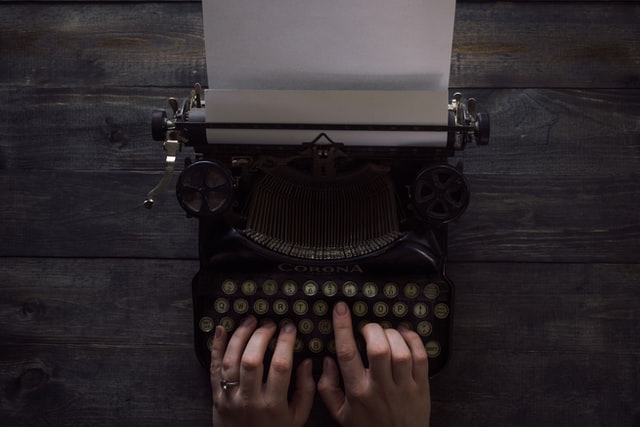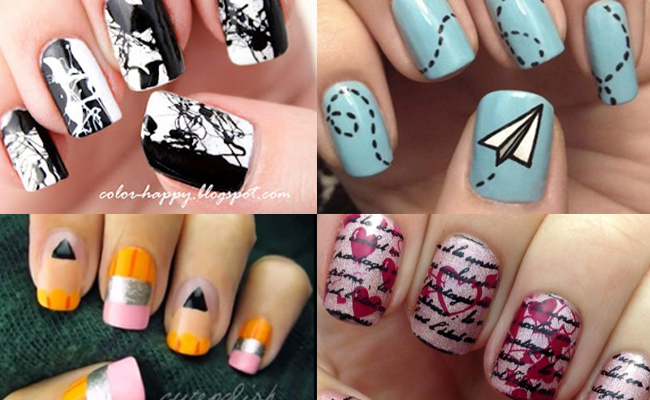NaNoWriMo Inspo: Author’s Writing Habits
[Photo by Patrick Fore on Unsplash]
Alright, writers. We’re in the thick of it. We’re approaching that halfway point and things might be starting to feel overwhelming. Maybe you’re not at the word count you should be by now, or maybe you are and you’re feeling the flames burn out. Whatever your needs, it’s likely about time for a pep talk.
We searched out past NaNoWriMo Pep Talks and spoke with a couple authors to get their best advice for NaNoWriMo participants. Need a little inspiration and/or advice to keep going? We’ve got you.
Diana Gabaldon in her 2015 NaNoWriMo Pep Talk
“[…] Anything that gets words on the page is the Right Thing to Do.
Do you write in disconnected bits, where you can see things happening? I do.
Do you write in ten or fifteen minute chunks, when that’s all the time you have? I sure do. (I mean, it’s nice to have unlimited time, but nobody ever does. Nobody ever finds time, either—you make it, or you haven’t got any.)”
Lauren Gibaldi's Advice for Quirk Readers
“Fun fact: my first book, THE NIGHT WE SAID YES, is a NaNoWriMo book. I loved NaNoWriMo because it forced me to write fast, without abandon. I didn't have time to go back and edit. I didn't have time to doubt my writing. So I wrote my first (very terrible) draft in a month and felt…well…accomplished! It was the first manuscript I ever finished.
I never stopped writing like that. Even now, I write very fast, very rough first drafts. I try not to go back and edit or change anything, because if I do I'll never go forward. I allow myself to write poorly, and accept my first drafts will always be a mess. But you know what's awesome? Once I'm done, I have all the time in the world to make them good. To me, finishing is the biggest battle. Once I conquer that, I feel like I can conquer anything.”
Stephanie Perkins in her 2015 NaNoWriMo Pep Talk
“[…] It isn’t about writing a good novel. It’s about writing a novel. It’s about finishing what you’ve started—a lesson I certainly still needed to learn. I signed up [for NaNoWriMo] out of desperation. If I couldn’t write something with a beginning, middle, and end before December, I’d stop trying. I let go of my fear of writing a bad novel and used that pent-up energy to fuel the act of writing itself.
Here’s what I want you to know: The kindest thing you can do for yourself right now is to let go of this fear. Don’t worry about writing something bad. Just write.”
Brendan Reichs' Advice for Quirk Readers
“When I’m creating new content, I need to be at my home office desk. I need to be in my comfortable, completely controlled, silent environment. I keep it like a tomb in there. I’m also a very serious outliner. I have a six-foot by six-foot white board and map out every chapter in a book before I start, including the character arcs. This process is a feedback loop that constantly changes and evolves, but to effectively handle plots I need to be able to visually track everything. A character’s emotional arc needs to be just as thorough as the plot, so that the story is growing in more ways than one. I keep this board up during the entire process.”
Maggie Stiefvater in her 2016 NaNoWriMo Pep Talk
“[…] The novel-writing part isn’t what makes NaNoWriMo impossible. Time is the only thing that makes NaNoWriMo impossible.
[…]
Here’s how I fight time:
1. Know my project. I need to know what I want that final project to look like. Where it sits on the shelf, why I’m writing it, how it will make the reader feel. Then I ask myself with each chapter: does this belong in the book I said I was writing?
2. Never sit at my computer without knowing what I’m going to write. If I’m stuck, I need to stimulate my physical body so my mind can play: drive, walk, shower.
3. Unwind each day with thirty minutes of reading something that feels like what I’m trying to make, to remind myself how others accomplished it.
4. [brackets]. If I know I need a beat but can’t quite get the details yet, I place brackets around the words [fight here] or [scene], so that I know I can go back and fix it later.
5. Move forward and backward. I go back and edit; I go forward and outline. Rereading and scanning ahead helps me keep #1 in mind.
6. Ignore word count. I get through the plot first, then I go back and flesh out or cut down as needed.
Now get to work. Time’s not on your side, but everything else is.”
Need a little extra NaNoWriMo motivation? Quirk blogger Bree Crowder is sharing NaNoWriMo tips and tricks every week on her blog.









